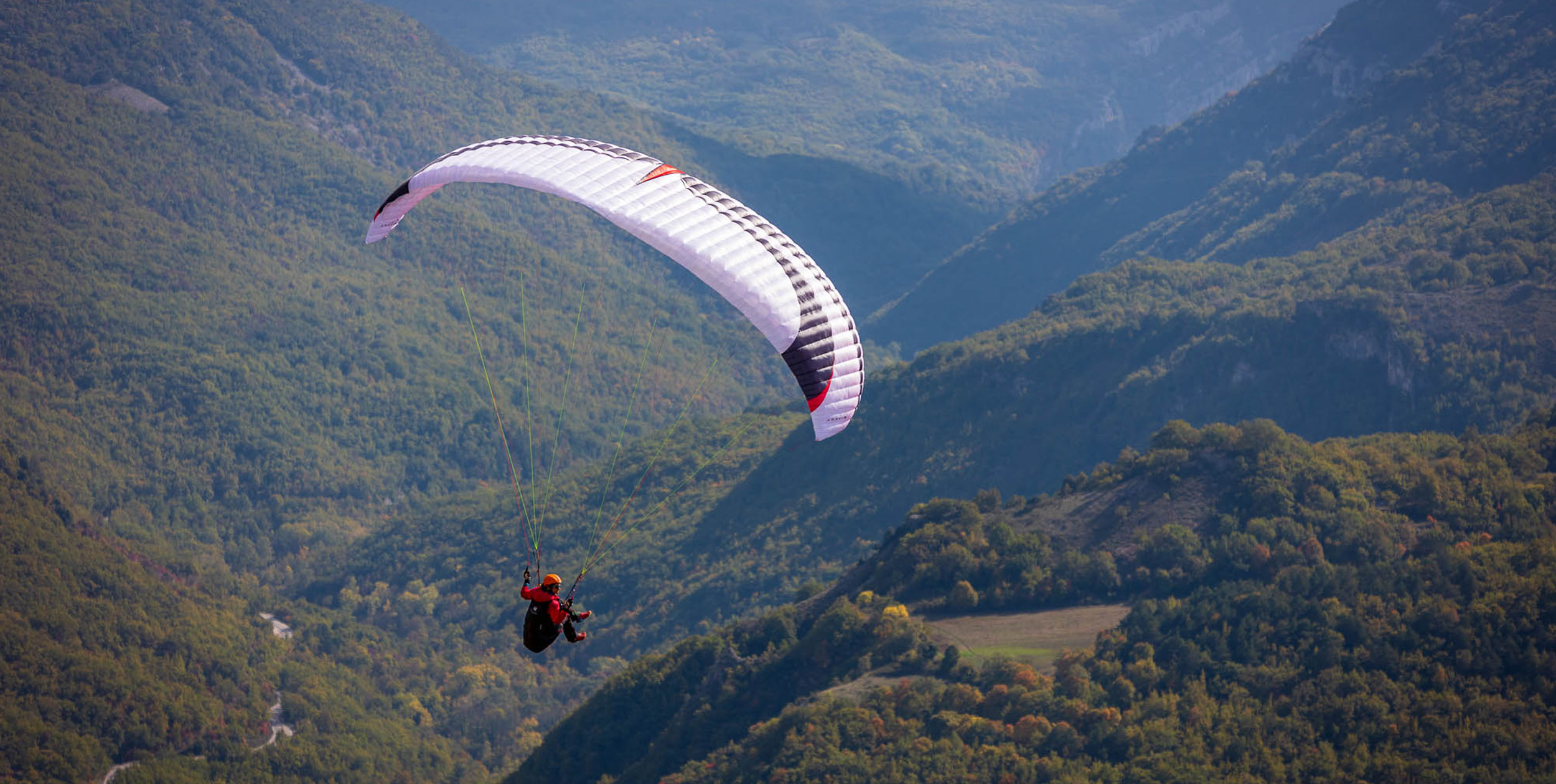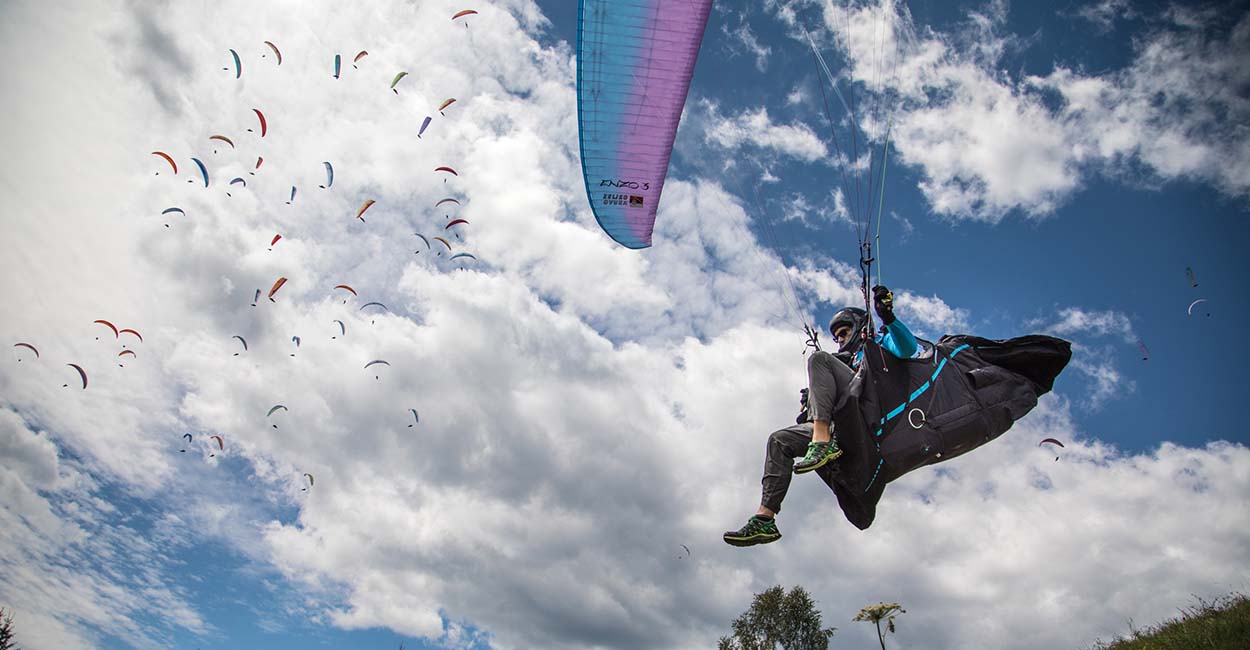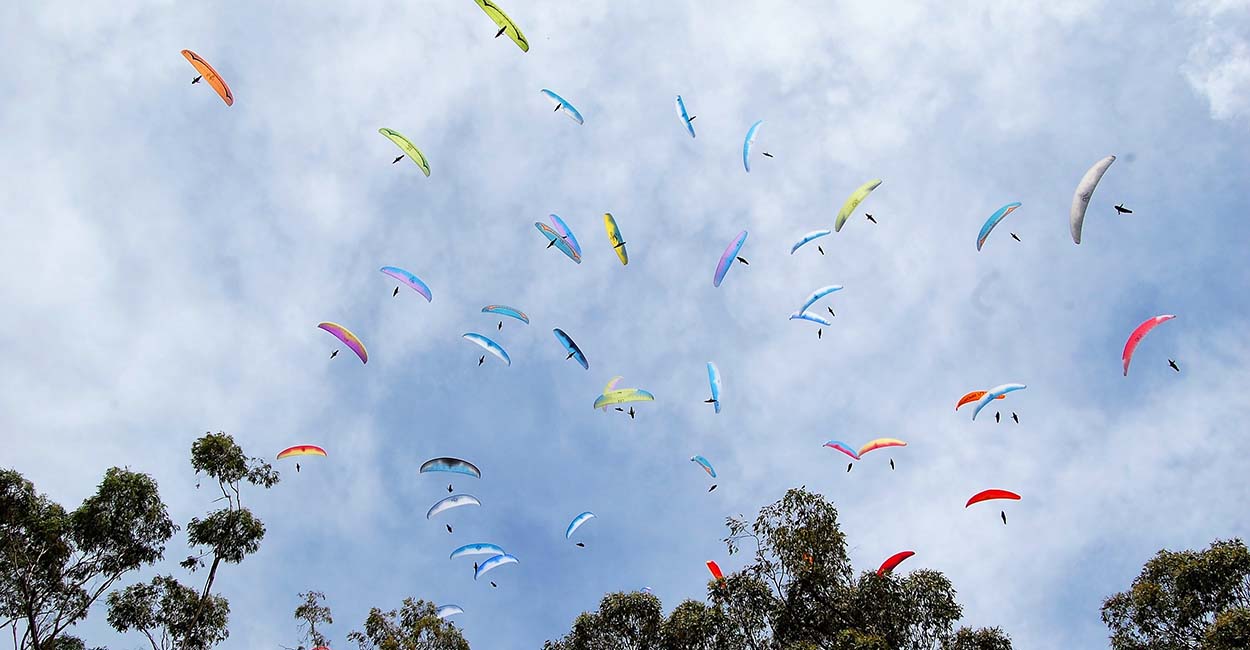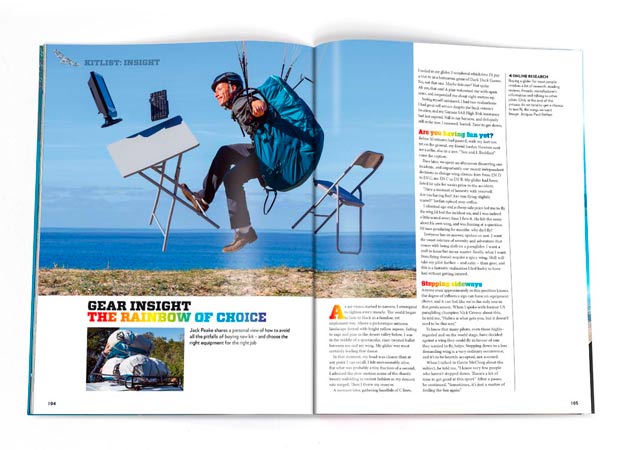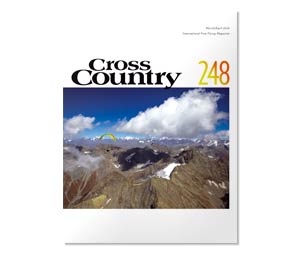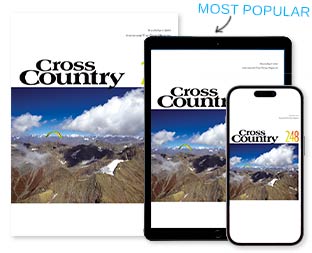Dune du Pyla … perfect soaring spot in the south west of France. Note the different speeds on downwind and into wind legs
Life would be great if free flying involved simply hopping from one thermic core to the next. However, it doesn’t and even on a booming day, there’s always some grovelling to be done between cores. Bob Drury takes us through what to do when you’re caught crosswind between thermals.
On almost every XC flight in the mountains you will at some point find yourself on a slope with a crosswind. It’s often rough, windy, and it may seem impossible to climb away from. So the first thing you ought to do is establish whether there’s anywhere you can get to that’s more into wind than your current location.
Any slight change of angle, bowl or gentle ridge line will increase your chances of survival since every degree that the slope turns into wind increases the amount of lift the wind will give you.
You should also look at where the wind’s coming from and judge whether it’s worth traversing along the slope to a place that faces the airflow more. This is particularly relevant when you’re trying to soar a valley flow in the mountains. If, however, you decide that you are already in the best place, then you should stay put, as there’s never much point in moving from where you are to a worse place.
If you can get yourself onto a slope that has the best angle available then you should stay there, flying as gentle a figure of eight-pattern as you can until you feel a thermal come through. Then you can move out and start trying to circle in it. Dedicating yourself to a particular place and working it is often what saves the day for one pilot, whilst others charge blindly on and find themselves decked.
If, however, there’s no identifiably better place to be, then it’s often worth surfing the whole slope rather than trying to work individual bits of lift. To do this, simply fly along the slope from one end to the other, slowing down in the rising air and speeding up through the sink or neutral air.
Once you reach the end of the slope you should turn in the last bit of lift, and do the same on the return leg. In doing this you maximise your lift potential by not making inefficient turns in the sinking sections. Remember, it’s important to slow down and speed up gently in order to stop the glider pitching about and becoming inefficient.
Whilst surfing a slope in this way, you’ll notice that you gain more from your into-wind leg than your down-wind leg. This is because your ground speed is lower, so you spend more time travelling through the lift on the into-wind leg, hence gaining more height than when you dash back through it downwind.
You should bear this in mind when approaching a crosswind slope with an option to join it at either the upwind or downwind end. If there is good sunshine on it and you need to gain height before moving on, then I would always try to join at the downwind end so as to maximise my time in the lift as I traverse the slope.
If at any time during your traverse you feel that the lift is strong enough to indicate a good thermal, then you should turn away from the slope and try to circle as discussed in the last Essential Selection.
Sometimes, thermals will traverse along a slope until they reach a point, like a ridge-line, where they are forced to release. These places are called breakaway points. Often when you’ve been unsuccessfully trying to climb crosswind using thermals on the slope, the thermal suddenly becomes useable when you allow yourself to drift over the breakaway point. This is so because once it leaves the ground and establishes itself, it forms a mass of air that is big enough for you to circle in.
Breakaway points are always worth identifying, and if you have the height then they are often worth exploring. However, it should be remembered that the air is often rough and choppy as the thermals break away from the terrain. Also, it might be impossible to wait there in between cycles as there is no dynamic assistance from the wind.
Sometimes, a crosswind slope will lead you to a corner where the angle of slope changes so that it then becomes a downwind slope. These places are called divergence points. These are normally good thermal triggers, but like breakaway points, they can be hard to soar depending on how acute the angle of change is. If you have the height, you should try to hang around and explore the air upwind of the divergence point for thermals.
If all goes well you should now be able to identify the best place to soar on a crosswind slope and the best place to catch a thermal too. You should also have realised that there’s never any point in leaving the best place to move to a worse place. Stay put until you have enough height to reach the next good place.
In the next issue we’ll be discussing the much-fabled ’lee side’: how to identify the lee, when to throw yourself into it, and more importantly, when not to.
Until then, happy soaring.
• Got news? Send it to us at news@xccontent.local. Fair use applies to this article: if you reproduce it online, please credit correctly and link to xcmag.com or the original article. No reproduction in print. Copyright remains with Cross Country magazine. Thanks
Subscribe to the world’s favourite hang gliding and paragliding magazine

